
Britain is a land woven with castles—iconic, historic, and often iconic institutions that tell tales of kings and queens, sieges, and centuries of intrigue. But beyond the well-trodden tourist hotspots, there lie countless lesser-known, enchanting castles—quiet, quirky, and steeped in history—hidden among rolling landscapes, rugged coastlines, and secluded villages. These hidden gems offer more than just sightseeing; they offer a chance to step into the past, explore secret corridors, and imagine life in bygone eras without the crowds.
In this guide, we’ll unveil some of Britain’s most captivating lesser-known castles—places that often fly under the radar but are brimming with stories, legends, and breathtaking scenery. From the ancient ruins perched high on cliffs to peaceful estates surrounded by nature, these castles are perfect for explorers seeking something a little different.
Let’s begin our journey into our hidden castle treasures.
Tucked away in the picture-perfect village of Dunster, just a few miles from the Bristol Channel, Dunster Castle is a charming, atmospheric fortress that invites visitors to step through centuries of history. It’s not the grand palace that most people associate with castles, but rather a cozy, layered relic that offers an intimate glimpse into medieval life, Victorian refinement, and peaceful gardens overlooking the lush Somerset countryside.
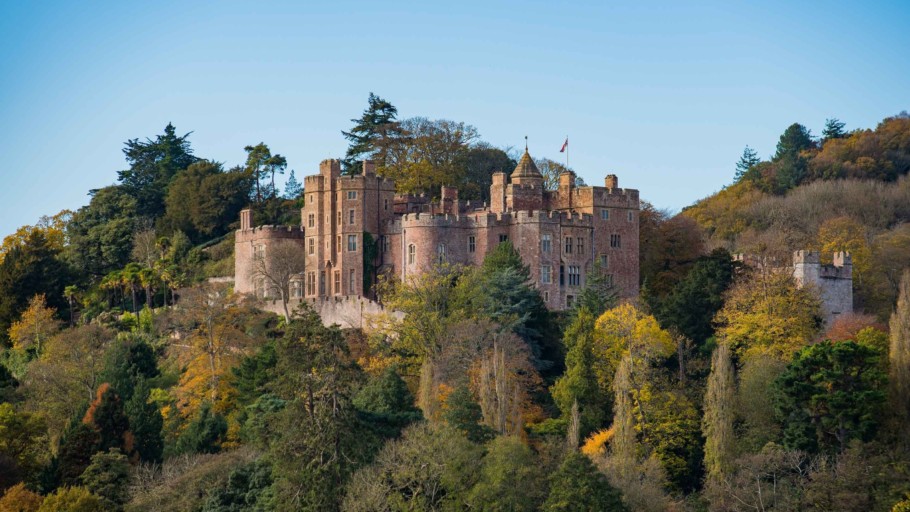
The castle’s origins trace back to the 1st century AD, when it was likely a Celtic fortification—an early defensive site guarding the approaches to the Bristol Channel. Its more recognisable form emerged in the late 11th century, after the Norman Conquest, when Sir William de Mohun constructed a motte-and-bailey castle on the site. This early fortress was built to extend Norman control over the region and guard vital trade routes.
Over the centuries, Dunster Castle was transformed into a more substantial stone manor, especially during the 13th and 14th centuries. Its strategic location made it a key defensive position during the turbulent Wars of the Roses, with it occasionally changing hands between Lancastrians and Yorkists. Its prominence waned in the 17th century, when it became more of a noble family home, notably under the Luttrell family, who acquired it in the 16th century.
What makes Dunster Castle such a captivating hidden gem today is its authentic, lived-in feel. Unlike massive fortresses that have been extensively restored or reconstructed, Dunster remains largely as it was, with original medieval features preserved alongside Victorian-era additions. You can wander through narrow stone corridors, peer inside the keep’s ancient rooms, and explore peaceful gardens that cascade down the hillside.
The castle’s interior offers a fascinating mix of history and personal stories. There are ancient armor collections, family portraits, and a series of historical exhibitions detailing the Luttrell family’s long stewardship. The well-preserved medieval hall, with its exposed timber beams and stone gargoyles, transports visitors back to a time when knights and noble families ruled the land.
Located on a gentle hillside and surrounded by charming cobbled streets and a scenic riverside, Dunster Castle’s setting is quintessentially British. Its low key, authentic atmosphere sets it apart from more crowded monuments. The views across the Somerset Levels and the nearby coast are breathtaking, especially at sunset.
For those seeking a peaceful, immersive experience into Britain’s medieval and Victorian past, Dunster Castle is a perfect hidden treasure. Its rich history, combined with its stunning landscape and cozy charm, provides a quintessentially British castle experience—without the crowds.
Far from the crowded castles of Conwy and Caernarfon, Raglan Castle stands proud amid the lush, rolling hills of Wales—a true hidden gem that looks like something straight out of a fairy tale. With its striking towers, expansive courtyards, and dramatic ruins, Raglan offers an atmospheric encounter with history that’s often overlooked by mainstream tourists.
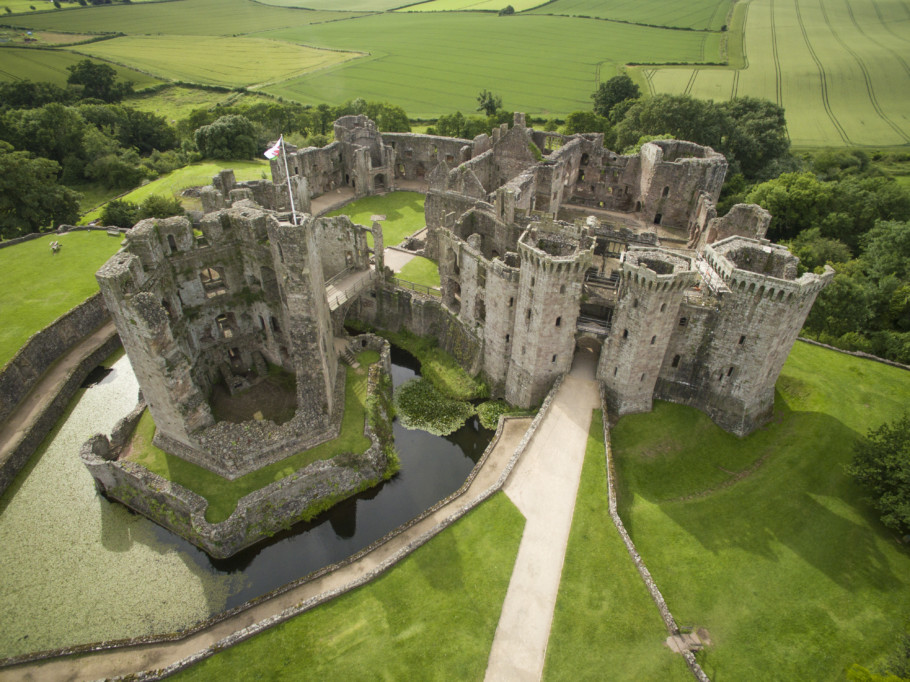
Constructed in the late 15th century by Sir William ap Thomas—a Welsh nobleman with grand ambitions—Raglan was meant to reflect both military might and aristocratic elegance. Its defining feature is the massive twin-towered gatehouse, which flanks the entrance to the sprawling complex. This imposing gateway was designed to impress visitors and intimidate enemies, with its crenellated battlements and domed bartizans (small turret-like structures).
Inside, the castle’s layout boasts multiple courtyards, ornate towers, and large halls that once hosted noble banquets and royal visitors. The Great Hall, with its vaulted ceiling and large stone fireplace, hints at the regal life once lived here. Surrounding the courtyards are thick curtain walls and a network of defensive features, including arrow slits and battlements—testament to its original purpose as a fortress during the turbulent Wars of the Roses.
Raglan Castle was a strategic stronghold during the Wars of the Roses, changing hands several times amid the chaos. Its prominent position on a hilltop meant it was a critical military asset, yet it was also a symbol of noble pride and power. The castle’s finest hour came when it became a Royalist refuge during the English Civil War; however, its fortunes turned for the worse when Parliamentarian forces besieged it in 1646. The subsequent bombardment and siege devastated much of the structure—parts of it still lie in ruins today, adding to its fairy-tale atmosphere.
Despite the damage, Raglan’s remains evoke a vivid sense of history and resilience—imagine the knights, nobles, and soldiers who fought and hid behind these walls. Today, Cadw, the Welsh heritage authority, maintains the site, inviting visitors to wander among the ruins, explore the battlements, and enjoy panoramic views of the Wye Valley, another bonus of this overlooked treasure.
Local lore surrounds Raglan with stories of ghostly apparitions and secret tunnels—tales that add to its mystical appeal. Some say the spirits of fallen soldiers and noble ancestors still wander the ruins at dusk, and legends whisper of hidden chambers beneath the castle, filled with treasure or escape routes. Whether you believe in ghosts or not, Raglan’s enchanting ruins are perfect for adventurous nights or peaceful days exploring one of Britain’s most romantic and forgotten castles.
Off the rugged coast of North Devon, Lundy Island is a remote paradise known for its rugged cliffs, seabird colonies, and—hidden among its rocky outcrops—Lundy Castle. Overlooking the Atlantic, this tiny fortress is a captivating and mysterious relic of Britain’s medieval maritime history, often overlooked in favour of more famous castles but packed with stories of pirates, secret tunnels, and Victorian aspirations.
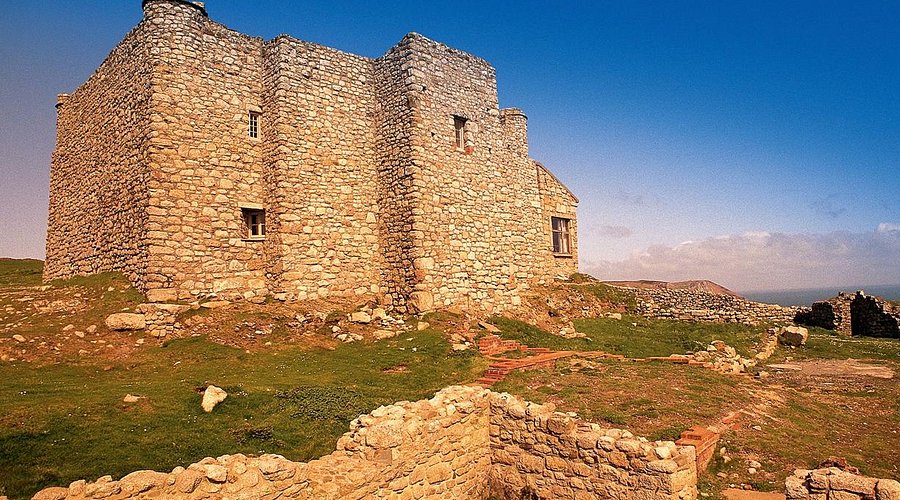
The first fortifications on Lundy date back to the early 12th century, with the Knights Templar even having a hold on the island at one point—the earliest fortifications mostly consisted of a watchtower to guard against pirates and rival kingdoms. Over the centuries, it evolved into a more substantial stone castle, with thick walls, a keep, and small windows designed for defence.
Fast forward to the 19th century, when the castle’s role shifted from military base to private retreat. Fitted with Victorian-style additions, Lundy Castle became a home for wealthy landowners and adventurers seeking solitude amidst wild, stormy seas. Its strategic perch provided perfect views for spotting ships—both friendly and hostile—and protected its inhabitants from frequent pirate attacks.
Today, Lundy Castle is a crumbling ruin, yet its dramatic setting makes it one of Britain’s most atmospheric and mysterious historic sites. Surrounded by jagged cliffs, pounding surf, and dramatic skies, it’s an ideal location for explorers and romantics alike.
Local legend tells of hidden treasure buried beneath the castle—the loot of pirates or smuggler’s stash waiting to be uncovered. Some say ghostly pirates haunts the battlements, and sailors have whispered of seeing flashing lanterns among the ruins at night.
Access is limited, as the island is only reachable by boat, but that only adds to the adventure. And did we mention that you can actually stay overnight there, thanks to the Landmark Trust?
While iconic castles like Norwich or Blickling dominate the Norfolk landscape, Oxburgh Hall remains a quietly captivating treasure—an authentic, atmospheric house where history and legend intertwine. This moated Elizabethan manor offers visitors a peaceful yet fascinating glimpse into the religious upheavals and aristocratic life of 16th-century England.
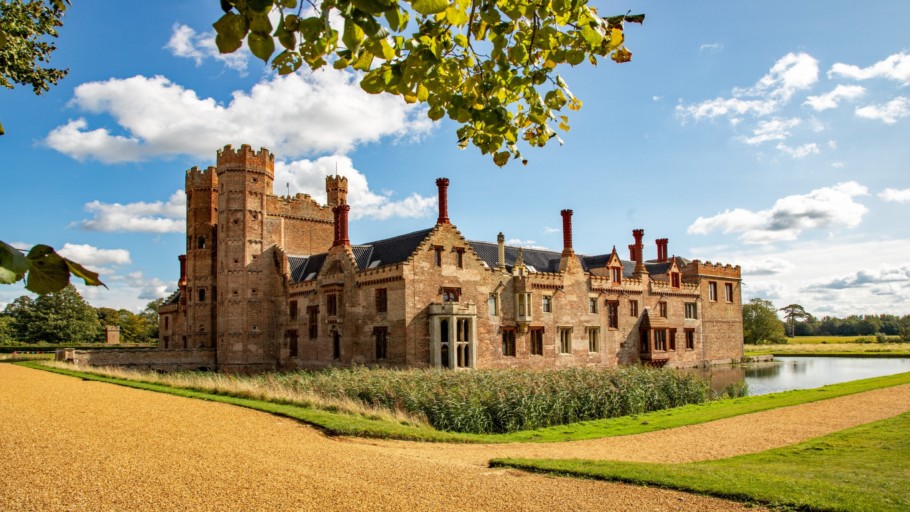
Built in the late 15th century by the Bedingfeld family, Oxburgh Hall’s striking red-brick façade and towering battlements are quintessentially Tudor, signalling both defence and noble grandeur. Its moat, filled with tranquil waters, surrounds the estate and adds to its storybook charm.
What truly makes Oxburgh noteworthy, however, is its long history of religious resistance. During the Reformation, the Bedingfeld family refused to abandon their Catholic faith, and they became secret protectors of priests—risking it all to hide religious figures in concealed rooms called “priest holes.” These hidden chambers are still visible today and evoke a sense of peril and courage from a bygone era.
Inside, Oxburgh Hall boasts a remarkable collection of furnishings, including Elizabethan tapestries, carved timber furniture, and religious relics. The rooms offer a tangible connection to the families that lived here, with personal touches that reflect their faith, resilience, and dedication to their beliefs.
One of the most iconic features is the priest hole, a narrow, hidden passage designed to conceal Catholic priests during times of persecution. Exploring this tiny space gives visitors a visceral sense of the dangers faced by religious families and their allies.
Beyond the house, the estate’s gardens and grounds are idyllic. From the walled flower garden bursting with seasonal blooms to the ancient woodland trails, Oxburgh offers a peaceful retreat where history and nature coexist in harmony. The estate’s tranquil setting makes it a perfect spot for contemplative walks and photography.
For history buffs, religious scholars, and explorers of England’s lesser-known stories, Oxburgh Hall offers an intimate journey into treacherous times of faith and resilience. Its preserved priest holes and authentic interiors create a living history site that’s both fascinating and inspiring. Its quiet charm makes it an ideal escape for those wanting a more personal, less crowded castle experience.
Perched on a small, rocky island in Loch Laich, near Oban in the Scottish Highlands, Castle Stalker is one of Scotland’s most instantly recognisable yet underrated castles. Its striking silhouette with its conical turrets and rugged stone walls has long captured the imagination of visitors and filmmakers alike. While it might not be as grand or well-known as Edinburgh Castle or Stirling, Castle Stalker’s dramatic location and fascinating history make it a true hidden gem of Scotland’s medieval landscape.
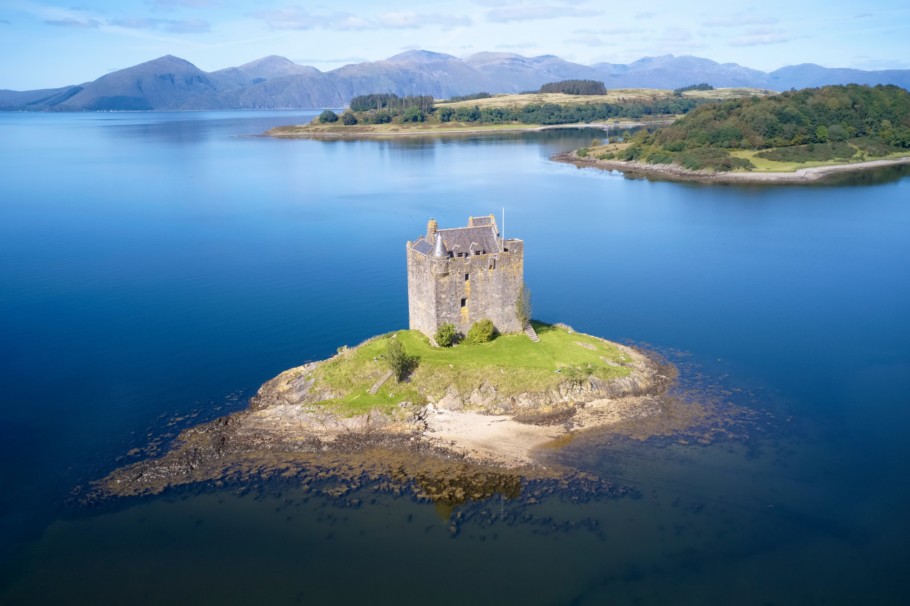
Constructed in the 15th century (in its present form – the site actually dates back to the 13th Century), Castle Stalker was originally built by the clan chief of the MacDougalls as a stronghold during a period of intense clan rivalries and territorial disputes. Its strategic position on the island allowed it to control access to the Firth of Lorne and defend against invading rivals. Over the centuries, it changed hands several times, passing through the possession of various noble families, including the Stewarts and the Campbells.
The castle’s architecture is a classic example of a Scottish tower house—a compact, defensible residence that provided protection and status. Surrounded by treacherous waters and towering cliffs, it was a natural fortress behind stone walls designed to withstand sieges and raids.
Despite its small size, Castle Stalker gained international fame in the 20th century thanks to its appearances in film and television. Most notably, it served as the imposing “Castle Aaaaarrrrrrggghhh” in Monty Python and the Holy Grail, with its silhouette instantly recognizable in the opening scenes of the film. Its dramatic, fairy-tale appearance made it the perfect stand-in for a quintessential Scottish fortress in Hollywood.
The castle has also appeared in other productions, including “Black Mirror” and “Sense8”. These appearances have only heightened its mystique and allure among fans of Scottish history and film.
Today, Castle Stalker is a privately owned ruin that remains an iconic symbol of Scottish heritage. Although it’s not open for interior visits except for a few tours every year, the castle can be appreciated from a boat tour or the nearby shoreline, giving visitors a chance to marvel at its commanding position and timeless beauty. The surrounding scenery—rugged coastline, shimmering lochs, and the soaring mountains of the Highlands—offers magnificent opportunities for photography and wildlife spotting.
For adventurers and film aficionados, visiting Castle Stalker offers a perfect blend of history, legend, and cinematic magic—an enduring reminder of Scotland’s majestic past and its enduring appeal on screen.
As you voyage across England’s historic landscape, few sights rival the picture-perfect allure of Bodiam Castle. Often mistaken for a fairy-tale setting, this iconic ruin captures the imagination with its picturesque silhouette, mysterious history, and an atmosphere steeped in centuries of legend. It’s a quintessential hidden gem—less crowded, yet bursting with stories of medieval grandeur, romance, and intrigue.
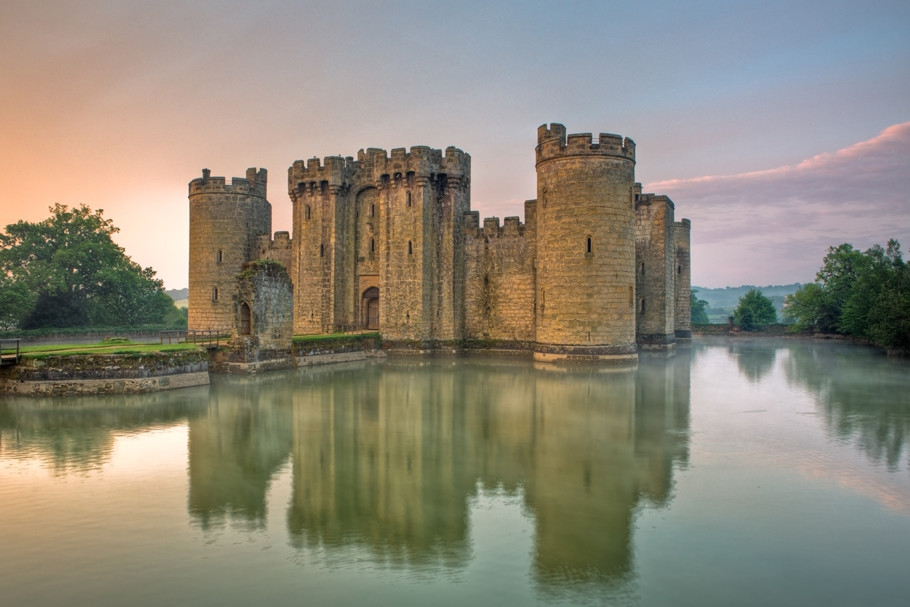
Built in 1385 by Sir Edward Dalyngrigge, Bodiam Castle was purpose-built as a defensive fortress. Its distinctive, picturesque profile — with its crenellated towers, curtain walls, and grand surrounding moat — has helped it become one of Britain’s most celebrated and beloved castles. Yet, unlike the heavily restored or reconstructed castles often featured in guidebooks, Bodiam has largely retained its authentic, romantic charm, making it an atmospheric ruin that feels like it’s come straight from a fairytale.
The castle’s classical medieval layout is designed with both defence and prestige in mind. Its striking outer defences, featuring a broad moat and drawbridge, would have been an imposing sight for invaders. Inside, the castle echoes with stories of knights and noble families—though today, visitors mostly come to wander beneath its towering battlements and soak in majestic views.
Bodiam whispers stories of secret tunnels, buried treasure, and ghostly apparitions—tales that have grown over centuries. Folklore suggests hidden chambers beneath the castle, filled with gold and relics from medieval conflicts. Some even say the ghost of a medieval knight haunts the ramparts, watching over his old domain.
In recent years, legends of a “White Lady” haunting its towers have persisted, especially during foggy evenings, adding an otherworldly touch to this already magical scene. The castle’s band of ivy, moss-covered stones, and surrounding wetlands create a setting perfect for stories and whispered legends—an authentic, romantic landscape that feels as if it belongs to a bygone era.
Bodiam’s sheer visual appeal makes it one of the most photogenic castles in Britain, often seen in postcards and films. Its idyllic surroundings—reflecting in the moat at dawn or sunset—add to its enchantment. Visitors can explore the ruined shell, imagine medieval life, or settle for a peaceful picnic on the grassy battlements, with sweeping views of the Sussex countryside.
Despite its fame, Bodiam remains a less commercialised spot compared to other well-known castles, which allows for a quieter, more personal experience. It’s a place where fairy tales and history blend seamlessly—and where the captivating stories of knights, kings, and secret legends continue to live on.
Nestled within woodland near Cardiff, Castell Coch (meaning “Red Castle”) looks like it belongs within a children’s storybook—its turrets, fairy-tale towers, and vibrant red sandstone walls shrouded in myth and legend. Yet, beneath its enchanting appearance lies a reconstructed Victorian marvel, built atop an older medieval fortress.
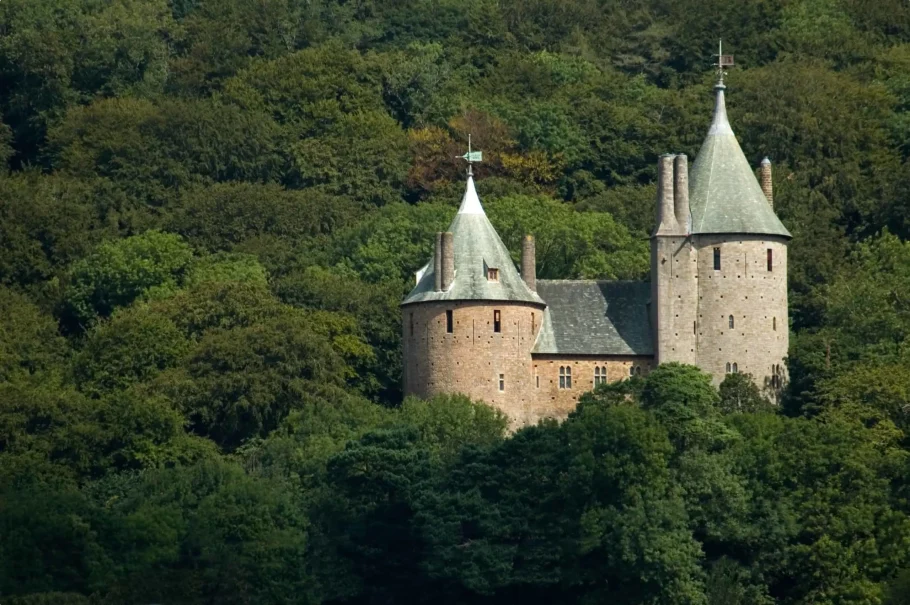
The original castle on this site dates back to the 13th century, built as a defensive outpost during the Welsh border wars. Its strategic hillside location provided commanding views over the surrounding area. Over the centuries, it changed hands and fell into disrepair, until the 19th century, when architect William Burges was commissioned to create a fantasy castle as the romantic retreat of the Marquess of Bute.
Burges’s Renaissance-inspired design incorporated medieval motifs, fairy-tale turrets, and vibrant interior murals—creating a whimsical, storybook ambiance. The castle’s interiors are decorated with intricate woodwork, stained glass, and gold leaf—much of which still dazzles visitors today.
Castell Coch is not just an architectural masterpiece; it’s a place haunted by legends. Tales of ghosts lurking in the shadowy halls, secret tunnels beneath the castle, and fairy spirits that might have inspired its fantastical design enrich the experience. The surrounding woods are equally enchanted, with ancient trees and hidden glades adding to the fairy-tale atmosphere.
A visit here feels like stepping into a storybook—and for those who love Welsh legends, medieval castles, and fairy tales, Castell Coch is a must-see hidden gem in Wales.
Each of these hidden gems offers a different perspective on Britain’s medieval and post-medieval past—from the rugged coastlines of Lundy to the romantic towers of Bodiam, and the fairy-tale towers of Castell Coch. They all share one common trait: they are treasures hiding just beneath the surface, waiting for curious travellers willing to go off the beaten track.
Venturing to lesser-known castles isn’t just about avoiding the crowds; it’s about connecting with the land’s authentic history. These sites often conserve stories of everyday people—soldiers, monks, farmers, and local heroes—whose lives shaped the nation’s history. They offer a more personal, intimate experience, where you can wander through ancient walls and imagine the lives of those who built, fought, loved, and struggled within them.
We specialise in creating custom itineraries that include hidden gems and off-the-beaten-track experiences like these ones, all tailored to your personal interests – why not get in touch today and see where one of our private expert guides can take you?
2 September 2025